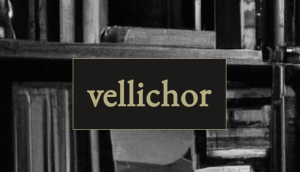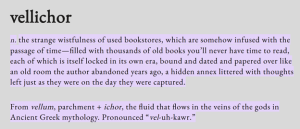
In some cultural and educational spaces, there is a mindset that evokes this idea that the old ways of doing things are more majestic than modern practices. Sometimes people see story telling and libraries as spaces like this. This mindset suggests that libraries should prioritize tradition over innovation. This leads to a notion that an ambience of information screens, high tech graphics and smart use of space is not as desirable as an ambience of physical books and well-organized clutter radiating with the smells of dust and petrichor. Why can’t we have both? In a 2017 interview with Matt Finch, Finch says that he is fascinated by the idea of the library as a place which lets you step inside a story, a world of fiction or non-fiction, and then participate in that world as you choose and that storytelling in a library means capturing the initial spark of inspiration. Finch then goes on to point out this spark of inspiration and can be ignited by in-person and digital experiences (Paraschiv and Finch, 2017).

Library experience can provide a sense of balance between traditional experiences as well as modernized experiences both in-person and virtual. It’s important to understand that while virtual experiences cannot fully take the place of in person experiences, it can provide more people with opportunities to experience a place. Michael McShane points out that not all people have access to renowned works of art or Historical artifacts, and that research shows that any experience, including virtual experience, with these things enhance critical thinking skills, and empathy (McShane, 2018). Contemporary libraries now have options to integrate nostalgia with modern technology in all types of library experiences. The library is also capable of allowing users the convenient options of emerging technology, such as Augmented Reality (AR), Virtual Reality (VR) and Artificial Intelligence (AI). One could call this practice of virtual “vellichor.” Vellichor is a useful term that I just learned from Google AI Overview. I found the official definition from The Dictionary of Obscure Sorrows. Arguably, we do not yet have virtual technology that can provide us with authentic vellichor experience, but with the right imagery and inspiration, it can evoke a feeling of it.

References:
Finch , M., & Paraschiv, P. (2021, November 23). 3 essential elements to consider when creating a voice for the library – interview with Matt Finch. Princh . https://princh.com/blog-elements-to-consider-when-creating-a-voice-for-the-library-matt-finch/#.XHWm6qB7mUm
McShane, M. (2024, March 4). Is virtual reality the future of field trips?. Forbes. https://www.forbes.com/sites/mikemcshane/2018/06/13/is-virtual-reality-the-future-of-field-trips/#626ae5d91809
https://www.thedictionaryofobscuresorrows.com/word/vellichor#:~:text=n.,vel%2Duh%2Dkawr.%E2%80%9D
@xoya I am intrigued by The Dictionary of Obscure Sorrows!
I really appreciate your ideas here about VR/AR and artificial intelligence, coming together to offer experiences. Your citation to Finch and his ideas about story are well-made and really round out this reflection that combines technology with biblio-history.